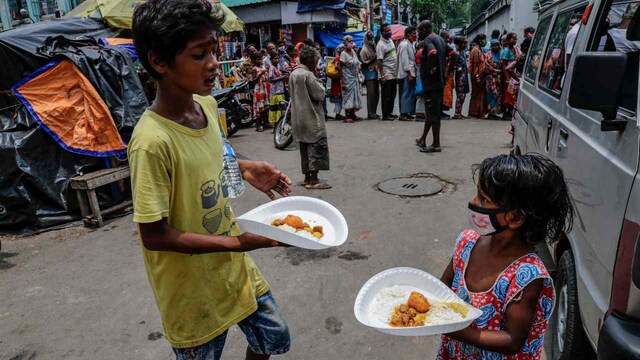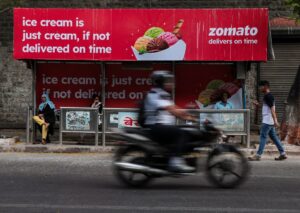He said that waves occur when new mutations become more infectious and there is a higher chance of the virus spreading.

Slum dweller children proceed with their share of free meal distributed by NGO as others stand in queue during lock down due to coronavirus pandemic in Kolkata, India, Wednesday, June 2, 2021. (AP Photo/Bikas Das)
There is no data that shows children will be affected in the third waves of COVID-19 , either in India or internationally, says AIIMS Delhi Director Dr Randeep Guleria on Tuesday. During a media briefing on COVID-19
, either in India or internationally, says AIIMS Delhi Director Dr Randeep Guleria on Tuesday. During a media briefing on COVID-19 that was held at the National Media Centre, PIB Delhi, Guleria said, “It is a piece of misinformation that subsequent waves of the COVID-19
that was held at the National Media Centre, PIB Delhi, Guleria said, “It is a piece of misinformation that subsequent waves of the COVID-19 pandemic are going to cause severe illness in children.” He also said that 60 percent to 70 percent of children who got infected and needed hospitalisation were children with either comorbidities or low immunity. Healthy children recovered with only a mild illness and they did not need to be hospitalized.
pandemic are going to cause severe illness in children.” He also said that 60 percent to 70 percent of children who got infected and needed hospitalisation were children with either comorbidities or low immunity. Healthy children recovered with only a mild illness and they did not need to be hospitalized.
Why do waves occur?
“Waves normally occur in pandemics caused due to respiratory viruses – the 1918 Spanish Flu, H1N1 (swine) flu are examples. The second wave of 1918 Spanish Flu was the biggest, after which there was a smaller third wave,” the AIIMS director said.
“Multiple waves occur when there is a susceptible population. When a large part of the population acquires immunity against the infection, the virus becomes endemic and infection becomes seasonal – like that of H1N1 that commonly spreads during monsoon or winters.”
Another reasons for the occurence of waves are when the virus mutates or changes.
Guleria said, “Waves can occur due to change in the virus (such as new variants). Since new mutations become more infectious, there is a higher chance for the virus to spread.”
He has also asked people to strictly follow COVID-appropriate behaviour.
“Whenever cases increase, there is a fear in people and human behaviour changes. People strictly follow COVID-appropriate behaviour and non-pharmaceutical interventions help break the chain of transmission,” he said.
“But when unlocking resumes, people tend to think that not much infection will happen and tend to not follow COVID appropriate behaviour. Due to this, the virus again starts spreading in the community, leading potentially to another wave,” Guleria added.
“If we have to stop subsequent waves, we need to aggressively follow COVID appropriate behaviour until we can say that a significant number of our population is vaccinated or has acquired natural immunity,” Guleria said. “When enough people are vaccinated or when we acquire natural immunity against the infection, then these waves will stop. The only way out is to strictly follow COVID appropriate behaviour.”
With inputs from ANI










